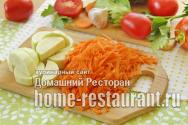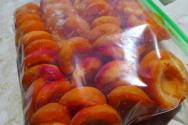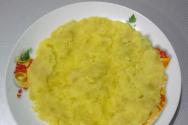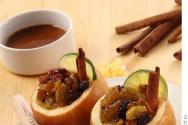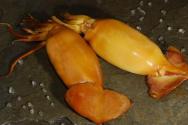Poltava groats 1 large GOST 276 60. Wheat groats. III. test methods
GOST 276-60
Group H34
INTERSTATE STANDARD
WHEAT GREAT
(Poltava, "Artek")
Wheat groats (Poltavskaya, "Artek"). Specifications
MKS 67.060
OKP 92 9471, 92 9472
Date of introduction 1960-04-01
INFORMATION DATA
1. DEVELOPED AND INTRODUCED by the State Committee of the USSR Council of Ministers for Grain Products
2. APPROVED AND ENTERED INTO EFFECT by the Committee of Standards, Measures and Measuring Instruments under the Council of Ministers of the USSR 02.26.60
Change No. 4 was adopted by the Interstate Council for Standardization, Metrology and Certification (Minutes No. 9 of 04/12/96)
The following voted for adoption:
State name | Name of the national standardization body |
The Republic of Azerbaijan | Azgosstandart |
Republic of Armenia | Armgosstandard |
Republic of Belarus | State Standard of Belarus |
The Republic of Kazakhstan | Gosstandart of the Republic of Kazakhstan |
Kyrgyz Republic | Kyrgyzstandard |
The Republic of Moldova | Moldovastandard |
Russian Federation | Gosstandart of Russia |
The Republic of Tajikistan | Tajik State Center for Standardization, Metrology and Certification |
Turkmenistan | Main State Inspectorate of Turkmenistan |
Ukraine | State Standard of Ukraine |
3. INSTEAD GOST 276-51
4. REFERENCE REGULATIVE AND TECHNICAL DOCUMENTS
Item number |
|
5. The validity period was lifted according to Protocol No. 3-93 of the Interstate Council for Standardization, Metrology and Certification (IUS 5-6-93)
6. EDITION (May 2010) with Amendments No. 1, 2, 3, 4, approved in December 1985, December 1987, January 1991, August 1996 (IUS 4-86, 2 -88, 5-91, 11-96)
This standard applies to wheat cereals obtained from the processing of durum wheat (Durum).
Mandatory requirements for wheat cereals, aimed at ensuring its safety for the life and health of the population, are set out in clause 4, table 3 (indicators: mineral impurity, harmful impurity, spoiled kernels, metallomagnetic impurity, pest infestation) and clause 4a.
Section 1. (Deleted, Amendment No. 1).
II. TECHNICAL REQUIREMENTS
II. TECHNICAL REQUIREMENTS
2. Wheat cereals must be produced in accordance with the requirements of this standard according to technological rules approved in the prescribed manner.
Depending on the processing method and the size of the grains, wheat groats are divided into types and numbers indicated in Table 1.
Table 1
1. Poltavskaya | 1 large |
2 and 3 average |
|
4 small |
|
2. "Artek" |
Wheat cereals must be produced from durum wheat of classes 1, 2 and 3. It is allowed to use durum non-grade wheat, the presence of impurities in which should not be more than:
impurities - 2.0%, including spoiled grains - 0.2%;
grain impurities - 5.0%, including sprouted grains - 3.0%;
wheat grains of other types - no more than 15%, including soft white wheat in durum wheat of the 3rd class - no more than 8% and non-grade wheat - 10%.
Wheat cereal must be produced from supplied durum wheat that meets the requirements of classes 1-4 according to GOST 9353*.
* GOST R 52554-2006 is in force on the territory of the Russian Federation.
(Changed edition, Amendment No. 1, 2, 3).
3. The characteristics of the types of wheat cereals must correspond to those indicated in Table 2.
table 2
Characteristic |
|
1. Poltavskaya | Cereal N 1 - wheat grain, freed from the germ and partially from the fruit and seed coats, polished, elongated with rounded ends. |
Cereal N 2 - particles of crushed wheat grain, completely freed from the embryo and partially from the fruit and seed coats, polished, oval in shape with rounded ends. |
|
Cereals No. 3 and 4 are particles of crushed wheat grain of various sizes, completely freed from the embryo and partially from the fruit and seed coats. The grain particles are round in shape and polished. |
|
2. "Artek" | Particles of finely crushed wheat grain, freed completely from the embryo and partially from the fruit and seed coats. The grain particles are polished. |
4. Wheat cereal of all types and numbers must meet the requirements specified in Table 3.
Table 3
Indicator name | |
Yellow |
|
2. Smell | Characteristic of wheat cereals, without foreign odors, not musty, not moldy |
Characteristic of wheat cereals, without extraneous flavors, not sour, not bitter |
|
4. Humidity in%, no more | |
5. Benign core in %, not less | |
6. Weed impurity in%, no more | |
including: | |
a) mineral impurity, no more | |
b) harmful impurity, no more, of which bitter | |
creeping, multi-colored knitting elm, no more | |
c) cockle, no more | |
7. Damaged kernels in%, no more | |
8. Processed grains of rye and barley in%, no more | |
9. Pest infestation of grain stocks | Not allowed |
10. An admixture of seeds of heliotrope pubescent and trichodesma gray | Not allowed |
11. Metallomagnetic impurity per 1 kg of cereal, mg, no more | |
Note. The size of individual particles of a metallomagnetic impurity in the largest linear dimension should not exceed 0.3 mm, and the mass of its individual particles should not exceed 0.4 mg. |
|
(Changed edition, Amendment No. 1, 2).
4a. The content of toxic elements, mycotoxins and pesticides in cereals should not exceed the permissible levels established by medical and biological requirements and sanitary standards for the quality of food raw materials and food products* Ministry of Health of the USSR.
_______________
* SanPiN 2.3.2.1078-2001 applies on the territory of the Russian Federation.
(Changed edition, Amendment No. 3).
5. The size characteristics of wheat cereals must correspond to those indicated in Table 4.
Table 4
Type and number of cereal | Diameter of holes in mm of two adjacent sieves | Number of passage and exit of two adjacent sieves, %, not less |
|
for determining | |||
passage | |||
Poltavskaya: | |||
large N 1 | |||
average N 2 | |||
average N 3 | |||
fine N 4 | |||
"Artek" | |||
Notes:
1. For Poltava grains No. 2, 3, 4 and for Artek grains, the presence of uncrushed wheat grains is not allowed.
2. For Artek cereals, the drainage is installed on a wire mesh sieve No. 0636.
(Changed edition, Amendment No. 1, 2, 4).
6. Impurities in wheat cereal of all types and numbers include those indicated in Table 5.
Table 5
Impurity name | Characteristic |
1. Weed impurity: | |
a) mineral impurity | Sand, ore, pebbles, particles of earth, emery and slag |
b) organic impurity | Particles of flower films, stems, ears, weed shells |
c) harmful impurity | Smut, ergot, creeping bitterweed, multi-colored kibble, thermopsis lanceolata (mouse grass) |
d) weed seeds | Seeds of all wild and cultivated plants |
Processed rye and barley grains over 3% |
|
Unprocessed wheat grains - not rounded, not polished, with part of the germ present |
|
e) cockle | Cockle seeds |
2. Damaged kernels | Rotten, moldy, charred and all other grains with clearly changed (spoiled) endosperm color |
3. Muchka | Passage through wire mesh sieve N 063 |
Note. Processed grains of rye and barley are grains of these crops that have undergone technological processing together with the main crop - wheat, freed from the embryo and flower films (barley) and partially from the fruit and seed coats.
(Changed edition, Amendment No. 1, 4).
IIa. ACCEPTANCE RULES
7. Acceptance rules - according to GOST 26312.1.
Section IIa. (Introduced additionally, Amendment No. 1).
7a. Each batch of cereal must be accompanied by a certificate confirming the content of toxic elements, mycotoxins and pesticides.
(Introduced additionally, Amendment No. 3).
Electronic document text
prepared by Kodeks JSC and verified against:
official publication
Wheat processing products. Pasta.
Technical conditions. Analysis methods:
Collection of national standards. -
M.: Standartinform, 2010
This standard applies to wheat cereals obtained as a result of processing durum wheat that meets the requirements of current standards.
1. VIEWS AND ROOMS
1. Depending on the processing method and the size of the grains, wheat cereal is divided into types and numbers indicated in the table. 1.
Table 1
II. TECHNICAL REQUIREMENTS
2. Wheat sent to cereal factories for the production of wheat cereal must be of quality not lower than the second class of current standards.
3. The characteristics of the types of wheat cereals must correspond to those indicated in the table. 2.
table 2
|
View |
Characteristic |
|
1. Poltavskaya |
Cereal No. 1 - wheat grain, freed from the germ and partially from the fruit and seed coats, polished, elongated with rounded ends. Cereal No. 2 - particles of crushed wheat grain, completely freed from the embryo and partially from the fruit and seed coats, polished, oval in shape with rounded ends. Cereals No. 3 and 4 are particles of crushed wheat grain of various sizes, completely freed from the embryo and partially from the fruit and seed coats. The grain particles are round in shape and polished. |
|
2. "Artek" |
Particles of finely crushed wheat grain, freed completely from the embryo and partially from the fruit and seed coats. The grain particles are polished. |
4. Wheat cereal of all types and numbers must meet the requirements specified in table. 3.
Table 3
|
Indicator name |
Norm |
|
1.Color |
Yellow |
|
2. Taste |
Characteristic of normal wheat cereals without any extraneous flavors, not sour, not bitter |
|
3. Smell |
Characteristic of normal wheat cereals, without mustiness, mold and other foreign odors. |
|
4. Humidity in%, no more |
14,0 |
|
5. Benign core in %, not less |
99,2 |
|
6. Weed impurity in%, no more and including: a) mineral impurity, no more b) harmful impurity, no more of which bitterweed and knittingweed, no more c) cockle no more |
0,3 0,05 0,05 0,02 0,1 |
|
7. Damaged kernels in %. no more |
0,2 |
|
8. Processed rye and barley grains |
3,0 |
|
9. Pest infestation of grain stocks |
Not allowed |
|
10 . Impurities of seeds of heliotrope pubescent-fruited and trichodesma gray |
Not allowed |
Note. The content of metallomagnetic impurities in the largest linear dimension is not allowed; it should not be more than 0.3 mm, and the mass of its individual particles should be no more than 0.4 mg.
5. The size characteristics of wheat cereals must correspond to those indicated in the table. 4.
Table 4
|
Type and number of cereal |
Hole diameter in mm two adjacent sieves |
Rate of passage and exit for each of two adjacent sieves separately in %, not less |
|
|
for determining |
|||
|
passage |
right away |
||
|
Poltavskaya: cereal No. 1 cereal No. 2 cereal No. 3 cereal No. 4 |
3,5 3,0 2,5 2,0 |
3,0 2,5 2,0 1,5 |
|
|
"Artek" |
1,5 |
||
Notes:
1. For Poltavskaya grains No. 2, 3, 1 and for Artek grains, the presence of uncrushed wheat grains is not allowed.
2. For Artek cereals, the drainage is installed on a metal woven sieve No. 063 in accordance with GOST 3921-3924-74* (*Valid until 01/01/1980).
6. Impurities in wheat cereals of all types and numbers include those indicated in the table. 5.
Table 5
|
Impurity name |
Characteristic |
|
1. Weed impurity: a) mineral impurity b) organic impurity c) harmful impurity d) weed seeds D) cockle |
Sand, ore, pebbles, particles of earth, emery and slag. Particles of flower films, stems, ears, weed shells. Smut, ergot, bitterweed, bobwhite, mousegrass. Seeds of all wild cultivated plants. Processed grains of rye and barley. Unprocessed grains of wheat - not rounded, not polished, with the presence of part of the germ. Cockle seeds. |
|
2. Damaged kernels |
Rotten, moldy and all other grains with clearly changed (spoiled) endosperm color |
|
3. Muchka |
Passing through wire sieve No. 063 |
GOST 276-60
Group H34
STATE STANDARD OF THE USSR UNION
WHEAT GREAT
(Poltava, "Artek")
Specifications
Wheat groats (Poltavskaya, "Artek").
Specifications
OKP 92 9471, 92 9472
Date of introduction 1960-04-01
INFORMATION DATA
1. DEVELOPED AND INTRODUCED by the State Committee of the USSR Council of Ministers for Grain Products
DEVELOPER
N.P. Kuzmina
2. APPROVED AND ENTERED INTO EFFECT by the Committee of Standards, Measures and Measuring Instruments under the Council of Ministers of the USSR 02.26.60
Change No. 4 was adopted by the Interstate Council for Standardization, Metrology and Certification (Minutes No. 9 of 04/12/96)
|
State name |
Name of the national standardization body |
|
The Republic of Azerbaijan |
Azgosstandart |
|
Republic of Armenia |
Armgosstandard |
|
Republic of Belarus |
State Standard of Belarus |
|
The Republic of Kazakhstan |
Gosstandart of the Republic of Kazakhstan |
|
Kyrgyz Republic |
Kyrgyzstandard |
|
The Republic of Moldova |
Moldovastandard |
|
Russian Federation |
Gosstandart of Russia |
|
The Republic of Tajikistan |
Tajikgosstandart |
|
Turkmenistan |
Main State Inspectorate of Turkmenistan |
|
Ukraine |
State Standard of Ukraine |
3. INSTEAD GOST 276-51
4. REFERENCE REGULATIVE AND TECHNICAL DOCUMENTS
|
Item number |
|
5. The validity period was lifted according to Protocol No. 3-93 of the Interstate Council for Standardization, Metrology and Certification (IUS 5-6-93)
6. REISSUE with Amendments No. 1, 2, 3, 4, approved in December 1985, December 1987, January 1991, August 1996 (IUS 4-86, 2-88, 5-91 , 11-96)
This standard applies to wheat cereals obtained from the processing of durum wheat (Durum).
Mandatory requirements for wheat cereals, aimed at ensuring its safety for the life and health of the population, are set out in clause 4, table 3 (indicators: mineral impurity, harmful impurity, spoiled kernels, metallomagnetic impurity, pest infestation) and clause 4a.
(Changed edition, Amendment No. 1, 4).
Section I. (Deleted, Amendment No. 1).
II. TECHNICAL REQUIREMENTS
2. Wheat cereals must be produced in accordance with the requirements of this standard according to technological rules approved in the prescribed manner.
Depending on the processing method and the size of the grains, wheat groats are divided into types and numbers indicated in Table 1.
Table 1
|
1. Poltavskaya |
1 large |
|
2 and 3 average |
|
|
4 small |
|
|
2. "Artek" |
Wheat cereals must be produced from durum wheat of classes 1, 2 and 3. It is allowed to use durum non-grade wheat, the presence of impurities in which should not be more than:
Weed impurities - 2.0%, including spoiled grains - 0.2%;
Grain impurities - 5.0%, including sprouted grains - 3.0%;
Wheat grains of other types - no more than 15%, including soft white wheat in durum wheat of the 3rd class - no more than 8% and unclassified - 10%.
Wheat cereal must be produced from supplied durum wheat that meets the requirements of classes 1-4 according to GOST 9353.
(Changed edition, Amendment No. 1, 2, 3).
3. The characteristics of the types of wheat cereals must correspond to those indicated in Table 2.
table 2
|
Characteristic |
|
|
1. Poltavskaya |
Cereal N 1 - wheat grain, freed from the germ and partially from the fruit and seed coats, polished, elongated with rounded ends. |
|
Cereal N 2 - particles of crushed wheat grain, completely freed from the embryo and partially from the fruit and seed coats, polished, oval in shape with rounded ends. |
|
|
Cereals No. 3 and 4 are particles of crushed wheat grain of various sizes, completely freed from the embryo and partially from the fruit and seed coats. The grain particles are round and polished |
|
|
2. "Artek" |
Particles of finely crushed wheat grain, freed completely from the embryo and partially from the fruit and seed coats. Cereal particles are polished |
4. Wheat cereal of all types and numbers must meet the requirements specified in Table 3.
Table 3
|
Indicator name |
|
|
Yellow |
|
|
2. Smell |
Characteristic of wheat cereals, without foreign odors, not musty, not moldy |
|
Characteristic of wheat cereals, without extraneous flavors, not sour, not bitter |
|
|
4. Humidity in%, no more |
|
|
5. Benign core in %, not less |
|
|
6. Weed impurity in%, no more |
|
|
including: |
|
|
a) mineral impurity, no more |
|
|
b) harmful impurity, no more, of which bitter |
|
|
creeping, multi-colored knitting elm, no more |
|
|
c) cockle, no more |
|
|
7. Damaged kernels in%, no more |
|
|
8. Processed grains of rye and barley in%, no more |
|
|
9. Pest infestation of grain stocks |
Not allowed |
|
10. An admixture of seeds of heliotrope pubescent-fruited and trichodesma gray |
Not allowed |
|
11. Metallomagnetic impurity per 1 kg of cereal, mg, no more |
Note. The size of individual particles of a metallomagnetic impurity in the largest linear dimension should not exceed 0.3 mm, and the mass of its individual particles should not exceed 0.4 mg.
(Changed edition, Amendment No. 1, 2).
5. The size characteristics of wheat cereals must correspond to those indicated in Table 4.
Table 4
|
Diameter of holes in mm of two adjacent sieves |
|||
|
Type and number of cereal |
for determining |
Number of passage and exit of two adjacent sieves, %, not less |
|
|
passage |
|||
|
Poltavskaya: |
|||
|
large N 1 |
|||
|
average N 2 |
|||
|
average N 3 |
|||
|
fine N 4 |
|||
|
"Artek" |
|||
Notes:
1. For Poltava grains No. 2, 3, 4 and for Artek grains, the presence of uncrushed wheat grains is not allowed.
2. For Artek cereals, the drainage is installed on a wire mesh sieve No. 0636.
(Changed edition, Amendment No. 1, 2, 4).
6. Impurities in wheat cereal of all types and numbers include those indicated in Table 5.
Table 5
|
Impurity name |
Characteristic |
|
1. Weed impurity: |
|
|
a) mineral impurity |
Sand, ore, pebbles, particles of earth, emery and slag |
|
b) organic impurity |
Particles of flower films, stems, ears, weed shells |
|
c) harmful impurity |
Smut, ergot, creeping bitterweed, multi-colored kibble, thermopsis lanceolata (mouse grass) |
|
d) weed seeds |
Seeds of all wild and cultivated plants |
|
Processed rye and barley grains over 3% |
|
|
Unprocessed wheat grains - not rounded, not polished, with part of the germ present |
|
|
e) cockle |
Cockle seeds |
|
2. Damaged kernels |
Rotten, moldy, charred and all other grains with clearly changed (spoiled) endosperm color |
|
3. Muchka |
Passage through wire mesh sieve N 063 |
Note. Processed grains of rye and barley are grains of these crops that have undergone technological processing together with the main crop - wheat, freed from the embryo and flower films (barley) and partially from the fruit and seed coats.
GOST 26927, GOST 26930 - GOST 26934, mycotoxins and pesticides - according to methods approved by the USSR Ministry of Health.
(Changed edition, Amendment No. 3).
IV. PACKAGING, LABELING, TRANSPORTATION AND STORAGE
9. Packaging, labeling, transportation and storage in accordance with GOST 26791 *.
* GOST R 51074-97 is in force on the territory of the Russian Federation.
Section IV. (Changed edition, Amendment No. 1).
The text of the document is verified according to:
official publication
Cereal products.
Specifications and methods of analysis:
Sat. GOST. - M.: IPK Standards Publishing House, 1998
INTERSTATE STANDARD
WHEAT GREAT
(POLTAVSKAYA, "ARTEK") TECHNICAL CONDITIONS
Official publication
Stan da rti nform
UDC 664.71:006.354
INTERSTATE
Group H34 STANDARD
WHEAT GREAT (Poltava, “Artek”)
Specifications
Wheat groats (Poltavskaya. “Artek”). Specifications
OKP 92 9471, 92 9472
Date of introduction 04/01/60
This standard applies to wheat cereals obtained from the processing of durum wheat (Durum).
Mandatory requirements for wheat cereals, aimed at ensuring its safety for the life and health of the population, are set out in clause 4, table 3 (indicators: mineral impurity, harmful impurity, spoiled kernels, metallomagnetic impurity, pest infestation) and clause 4a.
(Changed edition, Amendment No. 1, 4).
Sec. 1 (Deleted, Amendment No. 1).
II. TECHNICAL REQUIREMENTS
2. Wheat cereals must be produced in accordance with the requirements of this standard according to technological rules approved in the prescribed manner.
Depending on the processing method and the size of the grains, wheat groats are divided into types and numbers indicated in the table. 1.
Table 1
Wheat cereals must be produced from durum wheat of classes 1, 2 and 3. It is allowed to use durum unclassified wheat, the presence of impurities in which should not be more than: impurities - 2.0%, including spoiled grains - 0.2%; grain impurities - 5.0%, including sprouted grains - 3.0%;
wheat grains of other types - no more than 15%, including soft white wheat in durum wheat of the 3rd class - no more than 8% and non-grade wheat - 10%.
Wheat cereal must be produced from supplied durum wheat that meets the requirements of classes 1-4 according to GOST 9353*.
(Changed edition, Amendment No. 1,2, 3).
3. The characteristics of the species of the wheat group must correspond to those indicated in the table. 2.
* GOST R 52554-2006 is in force on the territory of the Russian Federation.
Official publication Reproduction prohibited
© STANDARDINFORM, 2010
table 2
1. Poltavskaya
2. "Artek"
Characteristic
Cereal No. 1 - wheat grain, freed from the germ and partially from the fruit and seed coats, polished, elongated with rounded ends.
Cereal No. 2 - particles of crushed wheat grain, completely freed from the embryo and partially from the fruit and seed coats, polished, oval in shape with rounded ends.
Cereals No. 3 and 4 are particles of crushed wheat grain of various sizes, completely freed from the embryo and partially from the fruit and seed coats. The grain particles are round in shape and polished.
Particles of finely crushed wheat grain, freed completely from the embryo and partially from the fruit and seed coats. The grain particles are polished.
4. Wheat cereal of all types and numbers must meet the requirements specified in table. 3.
Table 3
|
Indicator name | |
|
Characteristic of wheat cereals, without foreign odors, not musty, not moldy |
|
|
Characteristic of wheat cereals, without extraneous flavors, not sour, not bitter |
|
|
4. Humidity in%, no more | |
|
5. Benign core in %, not less | |
|
6. Weed impurity in%, no more | |
|
including: | |
|
a) mineral impurity, no more | |
|
b) harmful impurity, no more, of which bitter | |
|
creeping, multi-colored knitting elm, no more | |
|
c) cockle, no more | |
|
7. Damaged kernels in%, no more | |
|
8. Processed grains of rye and barley in%, no more | |
|
9. Pest infestation of grain stocks |
Not allowed |
|
10. An admixture of seeds of heliotrope pubescent and |
Not allowed |
|
trichodesma gray | |
|
11. Metallomagnetic impurity per 1 kg of cereal, mg, not | |
Note. The size of individual particles of a metallomagnetic impurity in the largest linear dimension should not exceed 0.3 mm, and the mass of its individual particles should not exceed 0.4 mg.
(Changed edition, Amendment No. 1,2).
5. The size characteristics of wheat cereals must correspond to those indicated in the table. 4.
Table 4
* SanPiN 2.3.2.1078-2001 applies on the territory of the Russian Federation.
Continuation of the table. 4
Notes:
1. For Poltavskaya grains No. 2, 3, 4 and for Artek grains, the presence of uncrushed wheat grains is not allowed.
2. For Artek cereals, the drainage is installed on a wire mesh sieve No. 0636.
(Changed edition, Amendment No. 1, 2, 4).
6. Impurities in wheat cereals of all types and numbers include those indicated in the table. 5.
Table 5
Impurity name
Characteristic
Weed impurity:
a) mineral impurity
b) organic impurity
c) harmful impurity
d) weed seeds
e) cockle Spoiled kernels
Sand, ore, pebbles, particles of earth, emery and slag Particles of flower films, stems, spikes, shells of weeds Smut, ergot, creeping bitterweed, multi-colored elm, Thermopsis lanceolata (Mousegrass)
Seeds of all wild and cultivated plants Processed grains of rye and barley over 3%
Unprocessed wheat grains - not rounded, not polished, with the presence of part of the germ Cockle seeds
Rotten, moldy, charred and all other grains with clearly changed (spoiled) endosperm color Pass through a wire mesh sieve No. 063
Note. Processed grains of rye and barley are grains of these crops that have undergone technological processing together with the main crop - wheat, freed from the embryo and flower films (barley) and partially from the fruit and seed coats.
(Changed edition, Amendment No. 1.4).
Pa. ACCEPTANCE RULES
7. Acceptance rules - according to GOST 26312.1.
Sec. Pa. (Introduced additionally, Amendment No. 1).
7a. Each batch of cereal must be accompanied by a certificate confirming the content of toxic elements, mycotoxins and pesticides.
(Introduced additionally, Amendment No. 3).
76. Control of the content of toxic elements, mycotoxins and pesticides is carried out in accordance with the procedure established by the product manufacturer in agreement with state sanitary inspection authorities and guaranteeing product safety.
(Changed edition, Amendment No. 4).
III. TEST METHODS
8. Sampling and test methods - according to GOST 26312.1 - GOST 26312.4, GOST 26312.7, GOST 20239.
(Changed edition, Amendment No. 3).
IV. PACKAGING, LABELING, TRANSPORTATION AND STORAGE
9. Packaging, labeling, transportation and storage in accordance with GOST 26791.
Sec. IV. (Changed edition, Amendment No. 1).
INFORMATION DATA
1. DEVELOPED AND INTRODUCED by the State Committee of the USSR Council of Ministers for Grain Products
2. APPROVED AND ENTERED INTO EFFECT by the Committee of Standards, Measures and Measuring Instruments under the Council of Ministers of the USSR 02.26.60
Change No. 4 was adopted by the Interstate Council for Standardization, Metrology and Certification (Minutes No. 9 of 04/12/96)
|
State name |
Name of the national standardization body |
|
The Republic of Azerbaijan |
Azgosstandart |
|
Republic of Armenia |
Armgosstandard |
|
Republic of Belarus |
State Standard of Belarus |
|
The Republic of Kazakhstan |
State Standard of the Republic of Kazakhstan |
|
Kyrgyz Republic |
Kyrgyzstandard |
|
The Republic of Moldova |
Moldovastandard |
|
Russian Federation |
Gosstandart of Russia |
|
The Republic of Tajikistan |
Tajik State Center for Standardization, Metrology and Certification |
|
Turkmenistan |
Main State Inspectorate of Turkmenistan |
|
State Standard of Ukraine |
3. INSTEAD GOST 276-51
4. REFERENCE REGULATIVE AND TECHNICAL DOCUMENTS
5. The validity period was lifted according to Protocol No. 3-93 of the Interstate Council for Standardization, Metrology and Certification (IUS 5-6-93)
6. EDITION (May 2010) with Amendments No. 1, 2, 3, 4, approved in December 1985, December 1987, January 1991, August 1996 (IUS 4-86, 2 -88, 5-91, 11-96)
GOST 276-60
Group H34
INTERSTATE STANDARD
WHEAT GREAT
(Poltava, "Artek")
Specifications
Wheat groats (Poltavskaya, "Artek"). Specifications
MKS 67.060
OKP 92 9471, 92 9472
Date of introduction 1960-04-01
INFORMATION DATA
1. DEVELOPED AND INTRODUCED by the State Committee of the USSR Council of Ministers for Grain Products
2. APPROVED AND ENTERED INTO EFFECT by the Committee of Standards, Measures and Measuring Instruments under the Council of Ministers of the USSR 02.26.60
Change No. 4 was adopted by the Interstate Council for Standardization, Metrology and Certification (Minutes No. 9 of 04/12/96)
The following voted for adoption:
State name | Name of the national standardization body |
The Republic of Azerbaijan | Azgosstandart |
Republic of Armenia | Armgosstandard |
Republic of Belarus | State Standard of Belarus |
The Republic of Kazakhstan | Gosstandart of the Republic of Kazakhstan |
Kyrgyz Republic | Kyrgyzstandard |
The Republic of Moldova | Moldovastandard |
Russian Federation | Gosstandart of Russia |
The Republic of Tajikistan | Tajik State Center for Standardization, Metrology and Certification |
Turkmenistan | Main State Inspectorate of Turkmenistan |
Ukraine | State Standard of Ukraine |
3. INSTEAD GOST 276-51
4. REFERENCE REGULATIVE AND TECHNICAL DOCUMENTS
Item number |
|
5. The validity period was lifted according to Protocol No. 3-93 of the Interstate Council for Standardization, Metrology and Certification (IUS 5-6-93)
6. EDITION (May 2010) with Amendments No. 1, 2, 3, 4, approved in December 1985, December 1987, January 1991, August 1996 (IUS 4-86, 2 -88, 5-91, 11-96)
This standard applies to wheat cereals obtained from the processing of durum wheat (Durum).
Mandatory requirements for wheat cereals, aimed at ensuring its safety for the life and health of the population, are set out in clause 4, table 3 (indicators: mineral impurity, harmful impurity, spoiled kernels, metallomagnetic impurity, pest infestation) and clause 4a.
Section 1. (Deleted, Amendment No. 1).
II. TECHNICAL REQUIREMENTS
II. TECHNICAL REQUIREMENTS
2. Wheat cereals must be produced in accordance with the requirements of this standard according to technological rules approved in the prescribed manner.
Depending on the processing method and the size of the grains, wheat groats are divided into types and numbers indicated in Table 1.
Table 1
1. Poltavskaya | 1 large |
2 and 3 average |
|
4 small |
|
2. "Artek" |
Wheat cereals must be produced from durum wheat of classes 1, 2 and 3. It is allowed to use durum non-grade wheat, the presence of impurities in which should not be more than:
impurities - 2.0%, including spoiled grains - 0.2%;
grain impurities - 5.0%, including sprouted grains - 3.0%;
wheat grains of other types - no more than 15%, including soft white wheat in durum wheat of the 3rd class - no more than 8% and non-grade wheat - 10%.
Wheat cereal must be produced from supplied durum wheat that meets the requirements of classes 1-4 according to GOST 9353*.
* GOST R 52554-2006 is in force on the territory of the Russian Federation.
(Changed edition, Amendment No. 1, 2, 3).
3. The characteristics of the types of wheat cereals must correspond to those indicated in Table 2.
table 2
Characteristic |
|
1. Poltavskaya | Cereal N 1 - wheat grain, freed from the germ and partially from the fruit and seed coats, polished, elongated with rounded ends. |
Cereal N 2 - particles of crushed wheat grain, completely freed from the embryo and partially from the fruit and seed coats, polished, oval in shape with rounded ends. |
|
Cereals No. 3 and 4 are particles of crushed wheat grain of various sizes, completely freed from the embryo and partially from the fruit and seed coats. The grain particles are round in shape and polished. |
|
2. "Artek" | Particles of finely crushed wheat grain, freed completely from the embryo and partially from the fruit and seed coats. The grain particles are polished. |
4. Wheat cereal of all types and numbers must meet the requirements specified in Table 3.
Table 3
Indicator name | |
Yellow |
|
2. Smell | Characteristic of wheat cereals, without foreign odors, not musty, not moldy |
Characteristic of wheat cereals, without extraneous flavors, not sour, not bitter |
|
4. Humidity in%, no more | |
5. Benign core in %, not less | |
6. Weed impurity in%, no more | |
including: | |
a) mineral impurity, no more | |
b) harmful impurity, no more, of which bitter | |
creeping, multi-colored knitting elm, no more | |
c) cockle, no more | |
7. Damaged kernels in%, no more | |
8. Processed grains of rye and barley in%, no more | |
9. Pest infestation of grain stocks | Not allowed |
10. An admixture of seeds of heliotrope pubescent and trichodesma gray | Not allowed |
11. Metallomagnetic impurity per 1 kg of cereal, mg, no more | |
Note. The size of individual particles of a metallomagnetic impurity in the largest linear dimension should not exceed 0.3 mm, and the mass of its individual particles should not exceed 0.4 mg. |
|
(Changed edition, Amendment No. 1, 2).
4a. The content of toxic elements, mycotoxins and pesticides in cereals should not exceed the permissible levels established by medical and biological requirements and sanitary standards for the quality of food raw materials and food products* of the USSR Ministry of Health.
_______________
* SanPiN 2.3.2.1078-2001 applies on the territory of the Russian Federation.
(Changed edition, Amendment No. 3).
5. The size characteristics of wheat cereals must correspond to those indicated in Table 4.
Table 4
Type and number of cereal | Diameter of holes in mm of two adjacent sieves | Number of passage and exit of two adjacent sieves, %, not less |
|
for determining | |||
passage | |||
Poltavskaya: | |||
large N 1 | |||
average N 2 | |||
average N 3 | |||
fine N 4 | |||
"Artek" | |||
Notes:
1. For Poltava grains No. 2, 3, 4 and for Artek grains, the presence of uncrushed wheat grains is not allowed.
2. For Artek cereals, the drainage is installed on a wire mesh sieve No. 0636.
(Changed edition, Amendment No. 1, 2, 4).
6. Impurities in wheat cereal of all types and numbers include those indicated in Table 5.
Table 5
Impurity name | Characteristic |
1. Weed impurity: | |
a) mineral impurity | Sand, ore, pebbles, particles of earth, emery and slag |
b) organic impurity | Particles of flower films, stems, ears, weed shells |
c) harmful impurity | Smut, ergot, creeping bitterweed, multi-colored kibble, thermopsis lanceolata (mouse grass) |
d) weed seeds | Seeds of all wild and cultivated plants |
Processed rye and barley grains over 3% |
|
Unprocessed wheat grains - not rounded, not polished, with part of the germ present |
|
e) cockle | Cockle seeds |
2. Damaged kernels | Rotten, moldy, charred and all other grains with clearly changed (spoiled) endosperm color |
3. Muchka | Passage through wire mesh sieve N 063 |
Note. Processed grains of rye and barley are grains of these crops that have undergone technological processing together with the main crop - wheat, freed from the embryo and flower films (barley) and partially from the fruit and seed coats.
(Changed edition, Amendment No. 1, 4).
IIa. ACCEPTANCE RULES
7. Acceptance rules - according to GOST 26312.1.
Section IIa. (Introduced additionally, Amendment No. 1).
7a. Each batch of cereal must be accompanied by a certificate confirming the content of toxic elements, mycotoxins and pesticides.
(Introduced additionally, Amendment No. 3).
Electronic document text
prepared by Kodeks JSC and verified against:
official publication
Wheat processing products. Pasta.
Technical conditions. Analysis methods:
Collection of national standards. -
M.: Standartinform, 2010

